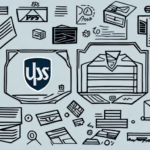How to Avoid Paying the UPS Void Shipment Charge
If your business regularly ships packages, you’ve likely encountered a void shipment with UPS at some point. Incurring this charge can be an unnecessary hassle and an extra expense. Understanding the causes of void shipments with UPS and learning how to prevent and correct avoidable mistakes is crucial for ensuring timely and cost-effective delivery. Here are some comprehensive tips on how to avoid paying the UPS void shipment charge:
Understanding UPS Void Shipment Charges
The UPS void shipment charge is a fee applied when you cancel a shipment after your package has been processed in their system. This can occur for several reasons, including incorrect package measurements, incorrect address, incorrect service level, insufficient packaging, or label errors. The fee varies based on shipment destination, package weight, and other factors, typically ranging from $15 to $250.
It's important to differentiate between the UPS void shipment charge and the UPS intercept fee. The intercept fee is charged when you request a change to the delivery address or delivery time after the package has been shipped. This fee usually ranges from $15 to $20 and depends on factors such as package weight and destination. To avoid these additional fees, always double-check all shipment details before sending your package.
For more details, refer to the official UPS [Void Shipment Policy](https://www.ups.com/us/en/help-center/sri/app/void-shipment.page).
Common Causes and Implications of Void Shipments
Incorrect Shipment Information
The most common reason for void shipments is inaccurate shipment information. Mistakes in the receiver's address, package dimensions, weight, or selected service level can lead to voiding. Ensuring accuracy in these details is essential to prevent additional charges.
Labeling Errors
Incorrect labeling, such as wrong account numbers, incorrect address labels, or missing package identification, can result in void shipments. Proper labeling is crucial for the smooth processing and delivery of your packages.
Packing Issues
Insufficient or improper packaging can cause damage or loss during transit, leading to void shipments. Using inadequate packaging materials increases the risk of your package being voided.
Regulatory Compliance
Void shipments can also occur due to regulatory compliance issues. Shipping restricted or hazardous materials without proper authorization can result in your shipment being voided and returned. Always ensure that your items comply with UPS regulations to avoid legal issues and additional fees.
Business Impacts
Aside from the additional charges, void shipments can lead to delayed deliveries, customer dissatisfaction, and damage to your brand reputation. These factors can negatively impact your business's bottom line and customer relationships.
Strategies to Prevent Void Shipments
Double-Check Shipment Details
Always verify the recipient's address, contact information, package dimensions, weight, and selected service level before finalizing the shipment. Accuracy in these details minimizes the risk of voiding your shipment.
Proper Labeling Practices
Ensure that labels are correctly printed and securely attached to the package. Avoid using old or reused labels, as they may contain outdated or incorrect information. Clear and readable labels facilitate smooth processing and delivery.
Correct Weight and Measurements
Use a reliable scale and measuring tools to determine the accurate weight and dimensions of your package. Small errors in weight or size can lead to significant fees and delays.
Appropriate Packaging Techniques
Choose suitable packaging materials that provide adequate protection for your items. Use cushioning materials like bubble wrap or packing peanuts to prevent damage during transit. Selecting the right box size is also critical to avoid overstuffing or underfilling.
Selecting the Right Service Level
Choose the appropriate UPS service level based on your shipment’s destination and required delivery time. Selecting the correct service ensures that your package is handled properly and delivered on time.
Proactive Shipment Tracking
Use UPS tracking tools to monitor your shipments in real-time. Early identification of potential issues allows you to address them promptly, reducing the likelihood of void shipments.
Best Practices for Handling Returns and Exchanges
Clear Return Instructions
Provide explicit return or exchange instructions on your website or within the package materials. Clear guidelines help prevent confusion and ensure that returns are processed correctly.
Proper Documentation
Include necessary return documentation, such as an RMA (Return Merchandise Authorization) number or detailed return instructions, to streamline the return process and avoid processing errors.
Monitoring Returns
Closely monitor the return process by tracking packages and confirming receipt of returned items. This helps in quickly identifying and resolving any issues that may arise during returns or exchanges.
Exploring Alternatives and Cost Reduction
Considering Other Shipping Carriers
If UPS's services or costs are unsatisfactory, consider alternatives like [USPS](https://www.usps.com/), [FedEx](https://www.fedex.com/), [DHL](https://www.dhl.com/), or regional carriers. Compare their rates, service quality, and reliability to determine the best fit for your business needs.
Negotiating with UPS
If you regularly ship with UPS, you may be eligible for discounts or negotiated rates. Here are some strategies to consider:
- Consolidate Shipments: Reducing the frequency of single shipments can help lower costs.
- Optimize Packaging: Use appropriate packaging to minimize dimensional weights and associated fees.
- Leverage Competitive Rates: Use rates from other carriers as leverage during negotiations with UPS.
- Bulk Discounts: Explore bulk discounts or special promotions that align with your shipping volume.
Conclusion
Avoiding void shipments with UPS requires meticulous attention to detail in shipment information, labeling, packaging, and service selection. By implementing the strategies outlined in this guide, you can minimize the risk of incurring void shipment charges, reduce shipping costs, and maintain a positive reputation for your business. For more information and resources, visit the official [ShipScience website](https://www.shipscience.com/).




















